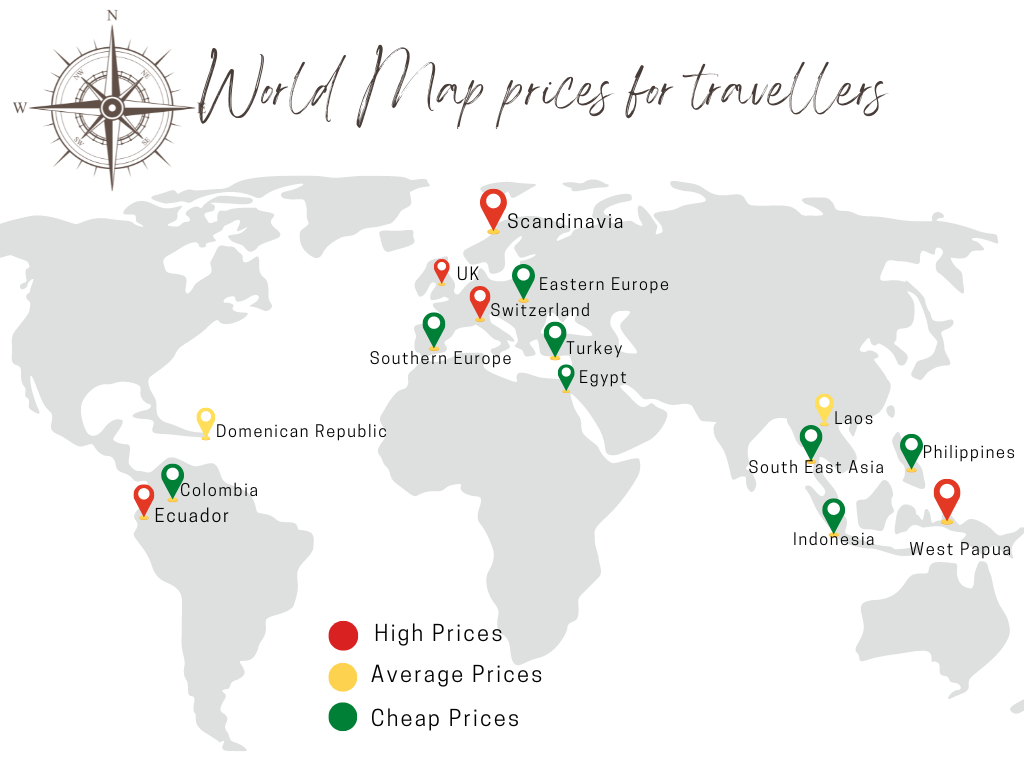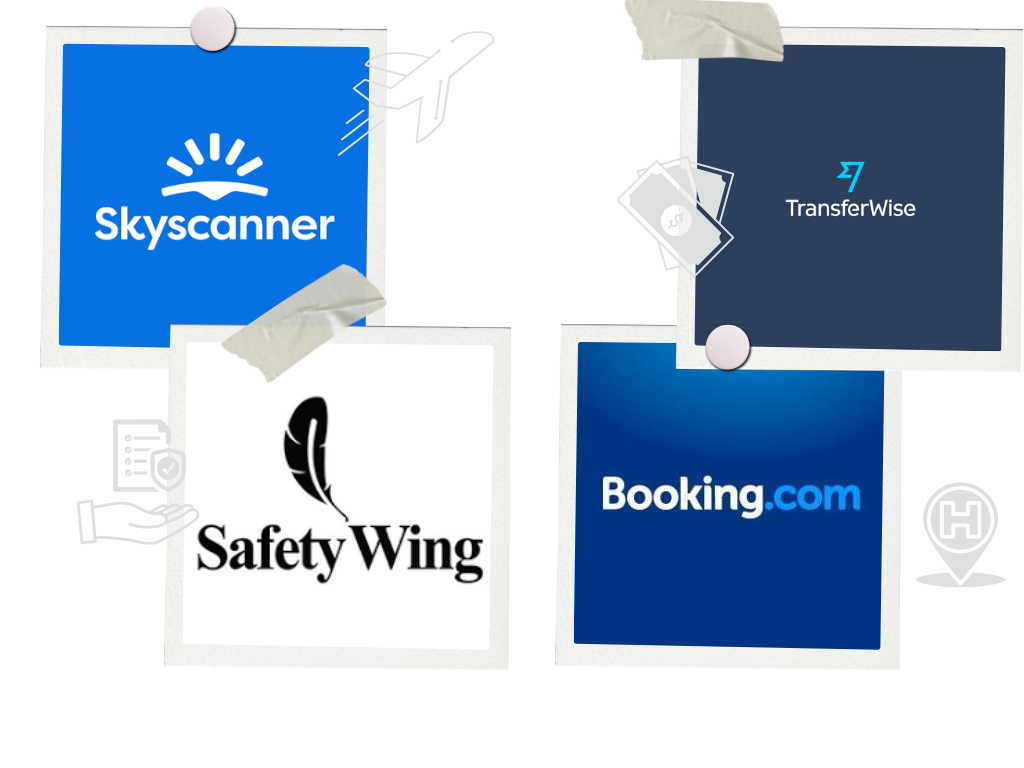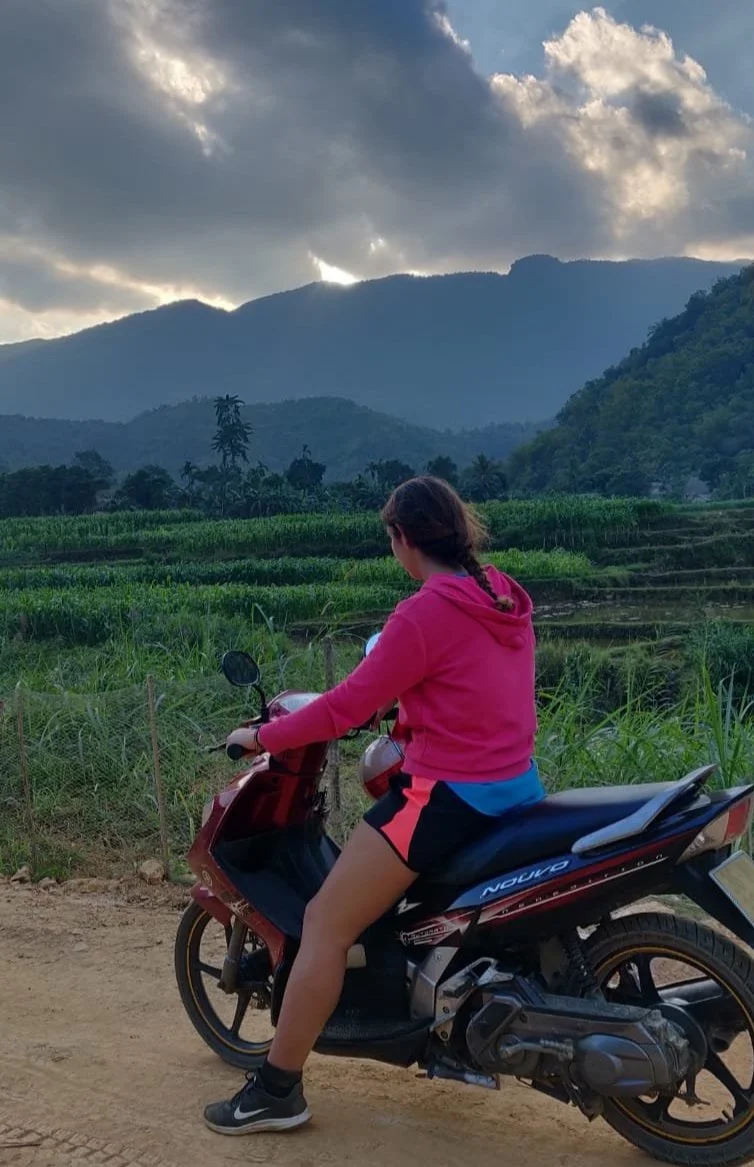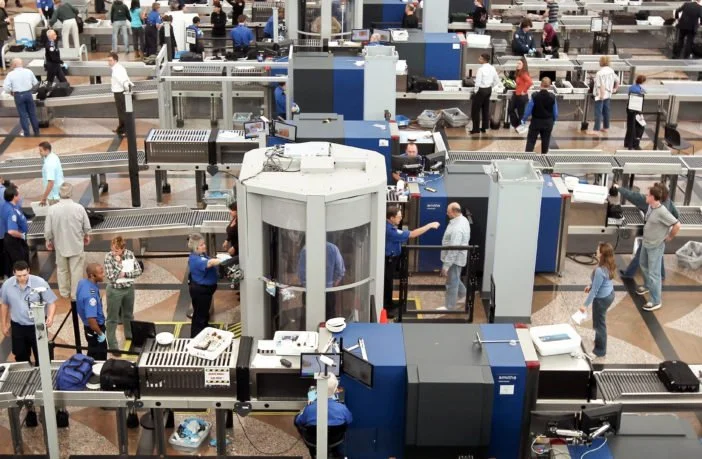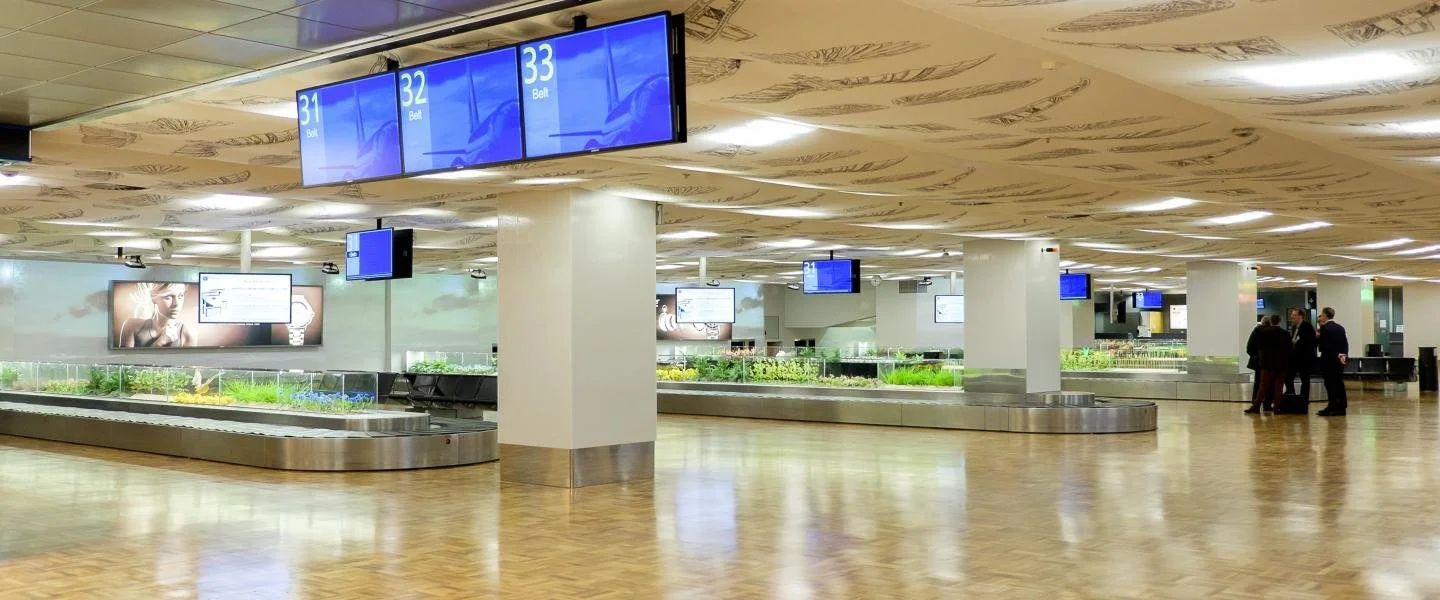How do I plan a trip? Tips for first-time solo travellers
It is an adventure you’ve always dreamt of, but you've struggled to plan it or didn't know where to start. Here are some useful tips that I wish I would have known before travelling.
TABLE OF CONTENTS
CHOOSE YOUR DESTINATION
HOW TO GET INSPIRED?
Vacation plans are often triggered by external factors. Nowadays more than ever It's very easy to feel inspired by amazing videos and pictures on Social Media.
➱ Instagram, Google Maps and Youtube are the platforms I use to look for information about a place. It can be helpful when you have a limited amount of time and you have to choose between two countries.
Watching travel vlogs on YouTube can give you as much information as a travel book, moreover, you even get reviews and tips that you can't find anywhere else. On YouTube, I like to learn about hidden gems, restaurant recommendations and the cost of a country. However, when it comes to natural wonders I always try not to research too much in advance, so that I can still get that wow effect while exploring a country.
PICK THE RIGHT SEASON
Picking the right destination according to the season is a key factor before planning a trip.
Before choosing the right country for you, make sure to check if you are going during a rainy season or a period that is better to avoid. However, I often travelled to Asia and South America during the wet season and it rained only a few times per week and that never stopped me going on adventures. Since it's the low season, you will also find fewer tourists.
➱ Check Climates to travel to compare temperatures and precipitation during the different months.
FOLLOW THE COVID RESTRICTIONS
Another important factor to take into consideration before booking a trip is the Covid restrictions, which are always changing according to the period you are going, therefore is always good to follow them before and after booking a trip.
➱ Check the official website of your country’s Ministry of Foreign Affairs and search the location where you are headed. You will find all the requirements that are necessary to enter into a country (e.g. Covid vaccine; Pcr test; entry form)
➱ Check the tourism official website of the country where you are travelling (e.g. ‘‘Visit Colombia Official Website’’) and you will find a section where they explain the new Covid restrictions. If you have any questions you can also contact them via email.
HOW TO GET OFF THE BEATEN PATH?
Getting off the beaten path is a key factor for me. Often, my travel experience got ruined by mass tourism, making it impossible to feel the real culture and identity of a place. Therefore I started to use a few tricks before choosing the right destination:
➱ Check on Google maps the number of reviews and if it's more than 500 it usually means that it's a crowded location.
➱ Hashtag the name of a place on Instagram and if there are too many pictures, expect many tourists.
2. TRICKS TO TRAVEL LOW COST
SAVE MONEY
As easy as it sounds many people struggle to save money for travelling, but with self-discipline and organisation, it can be easy to put some money aside. I usually start saving money 6 months before travelling and I am able to travel 3 months non-stop. But of course, there are some renounces that I also adapt to my daily life, from buying fewer groceries to cancelling my online shopping apps. It can be challenging, but it’s worth it, if travelling is your main priority.
➱ I recommend using TransferWise before and while travelling. It is an online bank account that allows you to organize your money through different ‘jars’. I always reserve one jar for my travels, so that I can be sure not to touch my saving before travelling. Moreover, with TransferWise you can withdraw or send money abroad with the cheapest exchange rate that you can find on the market.
COMPARE PRICES ON DIFFERENT TRAVEL SEARCH ENGINES
If you want the best deal don't stick to one tour operator, but compare prices with other websites.
➱ I usually use Skyscanner, Google Flights, Expedia, Edreams.
THE CHEAPEST TIME TO BOOK A FLIGHT
The best time to purchase plane tickets for a domestic trip is 64 days before your departure date. Tuesdays and Wednesdays are the cheapest days to depart: flights are about 24% lower than peak prices on Sundays, which translates to savings of about $85 per ticket.
If you want to save even more money and don’t mind skipping some hours of sleep, the recommended time to book a flight is 5:00 AM.
WHICH COUNTRIES ARE CHEAP TO TRAVEL TO?
This map represents the average cost for a traveller: from restaurants, flight tickets, transportation, to groceries. Keep in mind that I travel from Europe and I can only judge the countries that I visited recently.
3. THE BOOKING PROCESS
WHAT TO FIX IN ADVANCE?
Unless you are a control freak and you enjoy planning every single detail in advance, there are only a few important things that you have to check/book before starting your trip:
➱ TRAVEL INSURANCE: Travel insurance (such as SafetyWing) can be useful when things beyond your control go wrong, like in case of trip cancellations, missed transportation, delayed departure, and medical emergencies.
➱ VACCINES: Getting vaccinated will help keep you safe and healthy while you’re travelling, and make sure not to bring any serious diseases home. Depending on where you travel, you may come into contact with diseases that are rare in your country, like yellow fever, malaria, dengue fever, typhus and hepatitis. Mostly in countries like South East Asia and Africa. However, from personal experience, I don't recommend taking Malaria pills because of the strong side effects that may ruin your trip (stomach pain, nausea, vomiting, and headache). To prevent getting Malaria you should always apply mosquito repellent, wear long pants and long sleeves to cover your skin and mosquito netting over beds.
➱ COVID RESTRICTIONS: The situation in many countries has not yet normalised. Strict entry restrictions and infection control measures are still in effect in many places. Individuals are responsible for their own safety when travelling, and must check the entry restrictions and Covid-19 status at the planned destination.
➱ VISA: Some countries have visa restrictions in order to check the flow of visitors in and out of the country, and to prevent illegal immigration. For travel purposes there are different types of Visa:
VISA ON ARRIVAL: You pay for the Visa upon arrival at the airport and you only need a passport with at least six months of validity and some passport photos. Some visas on arrival are for free, like in Indonesia.
This is the Visa that I received in Laos
E-VISA: The visa application has to be submitted online, as well as the payment and the final decision on the application. It is recommended to lodge the Visa application at least 4 days in advance.
VISA AT THE EMBASSY: You need to send the visa application and the required documents to the nearest embassy. The recommended time for the visa application is at least one month before departure.
➱ RETURN TICKET: Before travelling, you also need to check if the country where you are heading requires a return flight. If you don’t like booking in advance I recommend buying the cheapest flight to the neighbouring country, so that you are still able to be flexible with your plans without losing too much money. (This is how I was travelling in South East Asia.) The police check at the airport only needs proof that you are not staying too long in the country. The countries that absolutely require documented proof of onward travel are Peru, New Zealand, the UK, the United States, the Philippines, Thailand, Indonesia, and Brazil.
WHEN SHOULD YOU BOOK YOUR VACATION?
➱ The ideal period to book your flights is 6 months before departure since you have more options and flights are usually cheaper than last-minute flights. However, since Covid began, I started to book flights not long before the trip (1-2 months earlier), mostly because Covid restrictions are constantly changing and you never know what new requirements you are gonna need.
➱ Regarding the accommodations, I like to save my favourite hotels/hostels/B&B on Booking.com, and I only book in advance an accommodation that I really like and I don’t want to miss. However, It’s always good to book for max. 3-4 nights, because you never know if you are gonna enjoy the place or the accommodation, and If you feel like staying longer it is always easier to prolong your stay, rather the cancelling a booking and trying to get a refund. During a long trip, I usually book accommodations 1-2 days before getting there. Something I learnt while travelling, is that there’s nothing better than following the ''flow'' and what you want at that moment.
WHAT WEBSITES DO I RECOMMEND?
➱ FOR FLIGHTS: Skyscanner
Skyscanner is the easiest way to look for the cheapest flights, hotels, and car rentals. You can use the price trend tracker and the secret “everywhere” feature that helps you to find the best deal for your next trip. Unlike other search engines, Skyscanner allows you to add layovers within your budget and shows the cheapest date to travel. However, if you want a flight cancellation policy it’s always better to book directly from the flight company, especially if you have an expensive flight that you don’t want to risk rebooking in case something happens.
➱ FOR ACCOMMODATIONS: Booking.com
Booking.com is my favourite reservation platform! I recommend it if you are a spontaneous traveller like me, that likes to book a last-minute hotel, or changes plans all the time. Booking.com offers very good price deals, loyalty rewards with freebies, perks and discounts, and most of the time, it’s cheaper to book through Booking.com than directly from the hotel page.
➱ FOR TRAVEL INSURANCE: SafetyWing
Flights can be delayed or you might need to return home if an emergency occurs. Without travel insurance, disruptions to your trip can end up costing you a fortune. In many cases, you lose the money you've already paid and have to pay for new bookings too. Especially in these uncertain times with a pandemic raging throughout the world, there is no better feeling than some certainty when travelling in different countries. One of the best reasons to buy travel insurance is to have a trip cancellation policy. SafetyWing can offer Covid and flight cancellation refund, a good deal that makes you feel safer while travelling overseas.
➱ FOR TRANSFERING MONEY ABROAD: TransferWise
If you are a traveller like me and you don’t want to worry about extra Bank costs while you are abroad, TransferWise is the perfect money transfer for you. It’s the cheapest way to send money to more than 80 countries. The exchange rates are some of the best you'll find and you can withdraw or send money abroad with the cheapest exchange rate that you can find on the market.
4. PUBLIC TRANSPORTATION
THE MOST CONVENIENT TRANSPORT SERVICES
I usually check in advance how to move around with public transport, but I don’t book anything in advance.
➱ The best website that I recommend is Rome2rio - it tells you exactly what itinerary to follow, the company’s name, the prices, and which means of transport to use, even in a remote location. Also, Google Maps gives you an idea about the distance between places and which public transport to take.
➱ BY TAXI: In Europe, you can move to a city with Bolt and Uber - very convenient taxi services where you can check in advance the rate that they will charge.
➱ BY BUS: If you prefer to travel by bus, I recommend using Flixbus - a very convenient and comfortable way to move around Europe, even for long distances. In fact, Flixbus connects 35 countries and over 2500 travel destinations with its seamless service. Adding on to the convenience, it manages almost 400,000 daily connections that depart every 30 minutes.
➱ BY TRAIN: I often struggled to plan my itinerary by train, worrying about train connections and timings. Luckily I found öbb scotty - a great app where you can access schedule information for any type of public transport.
HOW TO NAVIGATE THE AIRPORT?
I always loved every aspect of travelling, from planning the trip to the excitement of the unknown. However, I remember during my first travel alone, my only fear was the airport process, from the check/in, luggage, embark, security and gate.
Before turning 18, I always travelled with someone at the airport, so doing it by myself was a jump into the unknown, since I didn’t even know where to start. When you travel in company, the brain is switched off and you don’t even realize the whole process of stepping into a plane. Travelling solo is the best independence lesson you can have, you are focused, you slowly learn how to be organized, and best of all.. problem-solving skills! The unexpected is always around the corner and finding a fast solution without panicking is a skill that can come in handy in life!
To better understand the airport process, here’s a step-by-step guide which will help you know what to do and find your plane with ease. Plus, when you’ve done it once there’ll be nothing stopping you from travelling again and again and again…
STEP BY STEP..WHAT TO DO BEFORE TAKING A FLIGHT?
GET TO THE TERMINAL: Follow the signs at your respective airport to make sure you find the correct terminal building for your flight. Most airlines recommend that you arrive at the airport at least two hours before departure for domestic flights and three hours for international flights.
There are several reasons why you might need extra time:
Are you checking a bag? If so, you might have to spend more time checking in and getting someone to weigh your bag, instead of going straight to the security checkpoint with your boarding pass. Check-in waiting times increased significantly after Covid. For example, when I was travelling in South America I was waiting one hour before they checked my documents.
Are you parking at the airport? If so, give yourself an extra 20 minutes on top of what time you already planned to be there. Sometimes, airport parking lot shuttles can take a long time to make their rounds or get filled to capacity with families and their luggage. If you budget extra time, waiting for the next shuttle won’t derail your travel plans.
2. CHECK-IN:
Once you enter the airport, the first thing you should do is check-in (if you haven’t done so already online). Many airlines allow you to check-in online 24 hours before your flight. If you’re not checking a bag, this is a great option because it allows you to download a mobile boarding pass to your phone to bypass check-in and head for security (Step 3).
If you’d like a paper boarding pass or if you’re checking a bag, you’ll have to officially check-in. Some airlines will offer self check-in kiosks, where you’ll enter some information about your flight reservation to print boarding passes, check bags and select seats. From there, you’ll need to find your way to the luggage drop line to get your checked bag weighed.
For airports without self-check-in machines, the airline’s customer service agents at the check-in counter will handle the entire process. To find it, check the screen at the airport’s entrance with the check-in counter number.
3. GO THROUGH THE SECURITY CHECKPOINT
Once you’ve checked your luggage and gotten your boarding pass, you should go to the security checkpoint. Sometimes, the signage will say things like “To All Gates” to help lead you away from the check-in area. There may also be separate security checkpoints for different gates, so if there are directions based on your gate number, default to those instructions.
Add your carry-on luggage or personal item to the belt. Push your bins and your carry-on luggage through the scanner and then join the line to go through the X-ray machine.
4. FIND YOUR GATE & ENJOY YOUR FLIGHT!
Once you’ve been cleared through security, follow the signs to your gate. It should be listed on your boarding pass, but the most up-to-date information can be found on departure monitors throughout the airport.
Once you confirm the gate for your flight, look for signs that direct travellers toward different parts of the airport. You might have to take a quick tram to another terminal, but this should be clearly marked for travellers. In general, you will want to follow signs with numbers and arrows.
Now, depending on how much time you have before the boarding time listed on your boarding pass (usually 30 minutes to an hour before your departure time), you may have some time to kill. This is my favourite moment when I chill at a coffee shop or buy some snacks before boarding.
5. ARRIVAL & LUGGAGE CLAIM
Once the plane arrives at your destination, you’ll want to follow the signs to baggage claim to pick up your checked bags and go through customs and passport control (if needed). Each flight is assigned a luggage carousel, so check the monitors near baggage claim to find out which one your bag will arrive on. The time you spend waiting for your luggage to arrive can vary, sometimes up to 30 minutes or more.
If you’re feeling tired or overwhelmed by where to go, just follow the crowd of people and you are not gonna get lost!
5. SAFETY
WHICH COUNTRIES ARE SAFE TO TRAVEL TO?
This map represents the level of safety of all the countries where I’ve been to. Keep in mind that this is a subjective judgment from a female perspective.
So far I never had a bad experience while travelling, it’s also true that when I am alone I try to choose safer destinations to visit. The countries where I felt the safest were: Norway, Switzerland, Portugal, Spain, Laos, Philippines, Vietnam and surprisingly Colombia. The places where I felt less safe were: Egypt, East Java (Indonesia), Quito (Ecuador), and Paris (France). As you can see, mostly big capitals, however, if you go to the countryside you can have a completely different experience, it's very relaxed and you can feel at ease even as a lonely traveller.
Recently I visited Ecuador - a beautiful country with a unique culture, but I was surprised by how challenging was to wander around the capital Quito due to criminality. I could not show my phone in public, not even for taking pictures. Many areas in the city centre, (even during the day), were restricted for tourists, because too dangerous.
The best way to feel safe is to ask locals where is recommended to go and what places are better to avoid, they will always try their best to help you and make you enjoy the country.
RULES I FOLLOW AS A SOLO FEMALE TRAVELLER
One of the questions that I get the most is whether it is dangerous to be a solo female traveller. The truth is that is easier than most people think and is not that big of a deal, especially If you use your common sense, you can feel very safe as a female traveller.
I usually follow very simple rules:
Start Small: I started by visiting one country at a time, in tourist destinations like Spain, and Portugal. When you start to get experienced, you can choose more challenging destinations and travel for a longer period of time. That's when I travelled to South East Asia for four months.
Do Your Research: The more you know and you feel prepared, the more it will feel easier for you to travel to a new country.
Feel The Fear And Do It Anyway: It is normal to feel scared and uncomfortable. that's when you start to step out of your comfort zone, learn and grow.
I never go out by myself during the night to a place that I don’t know unless I’m together with a group of people.
I always check my glass if I go clubbing!
If I am alone camping, or hiking in a remote place, I share my location with a friend.
Ask locals what places are better to avoid, and you can't go wrong.
Trust your inner feeling, and if you get suspicious about a certain situation, it probably means that you are right and it is always better to be safe than sorry.
Travel is one of life’s greatest teachers. It pulls you out of your comfort zone and plunges you into the unknown. It reveals a world of cultures to explore and people to meet. And it helps you develop virtues like patience and humility.










